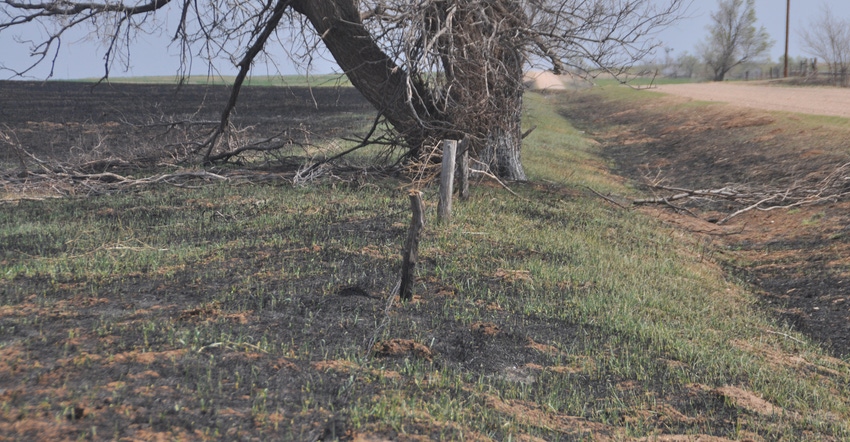
As farmers and ranchers struck by wildfires in early March that wiped out nearly a million acres of grassland, no-till crop residue and Conservation Reserve Program ground try to pick up the pieces, there are questions about just what is the best management practice moving forward to help soils and grass recover.
Soil fertility specialist Dorivar Ruiz-Diaz at Kansas State University says there should be very little impact on the ability to get seeds to germinate in fields covered with ash from burnt no-till residue. There could, however, be some big impacts on the nutrient and organic matter content of the soils, not to mention a big drop off in microbial activity in the short term.
The greatest risk, especially looking at the weather that has followed the fires, is erosion, he says. The days following the fires were warm, dry and windy — ideal conditions for turning mountains of ash and bare topsoil into duststorms.
"The biggest damage is likely to be to the fields that had been in continuous no-till for a couple of decades," he said. "That is a major loss of residue, and it will have a big impact on the soil for years to come as growers strive to build that back."
Fields that are enrolled in the Conservation Reserve Program are also at high erosion risk, largely because they are highly erodible lands to begin with or they wouldn't have been in CRP. Grasses that burned at extremely high temperatures may have damaged crowns, and the stand of grass may have to regenerate from seed, he says.
Soaking rains across the burned regions of southwest Kansas in the last week of March were just exactly what the region needed for recovery, and cooler temperatures with less destructive winds will help restore the grass.
In some areas, however, heavy, pounding rains created a new erosion risk as creeks, streams and rivers left their banks and flooded low-lying farm ground.
Ruia-Diaz also warns farmers to watch nutrient utilization levels carefully, especially this year and next.
"The drop in microbial activity might produce a one-year flash in nitrogen utilization from fertilizers because of a lack of microbes to tie up that nitrogen in the soil," he says. "Then, in years after that, you have a drop in utilization because you have to build back the organic matter."
He says that farmers struggling to anticipate long-term impacts might find some benefit in the studies that have been done in regard to planned residue removal from cropland.
"The impacts of removing residue, whether deliberately as a biomass harvesting effort or accidentally by wildfire, could have some correlation," he says. "I would encourage taking a look at what impact some of those long-range studies have shown."
About the Author(s)
You May Also Like






